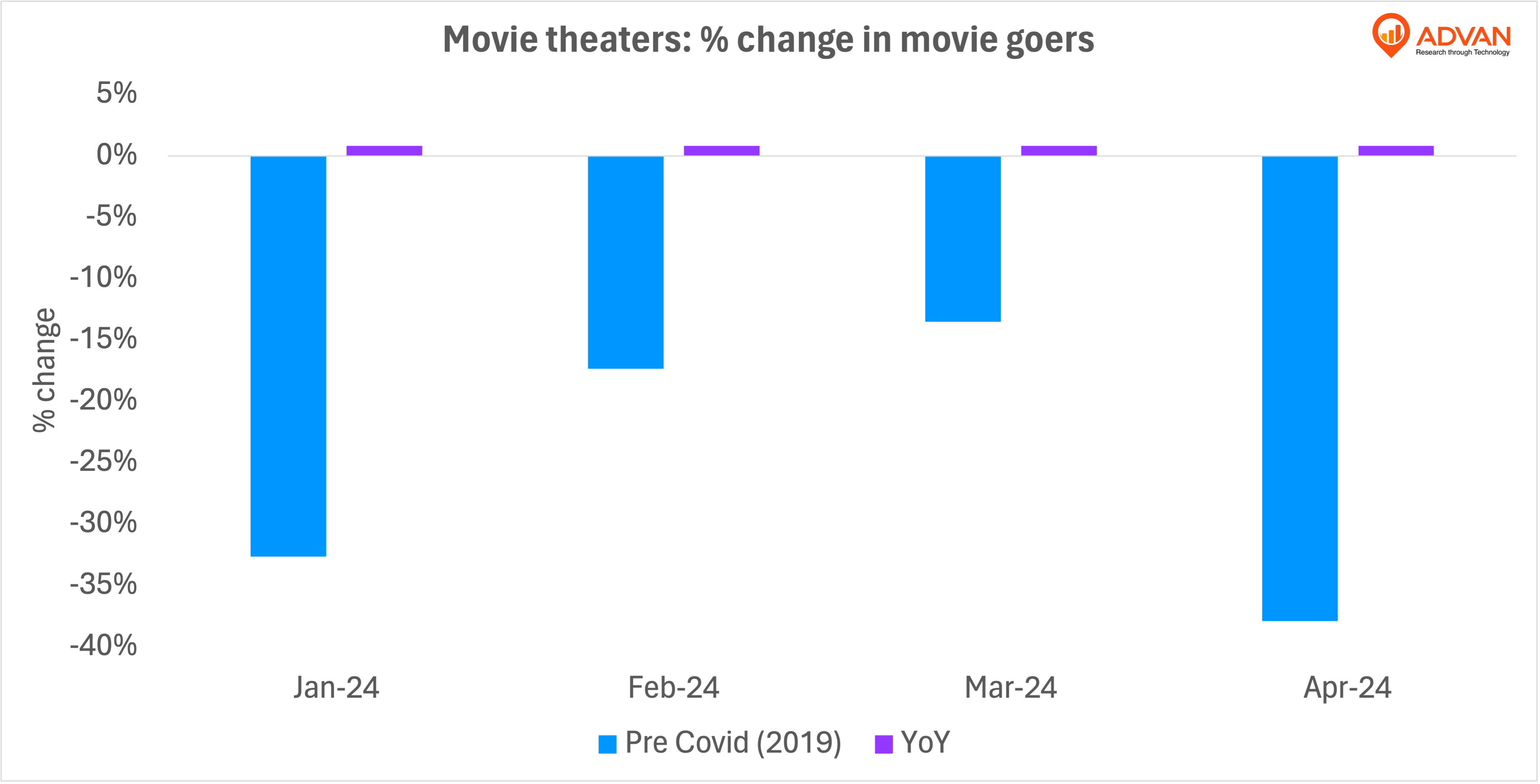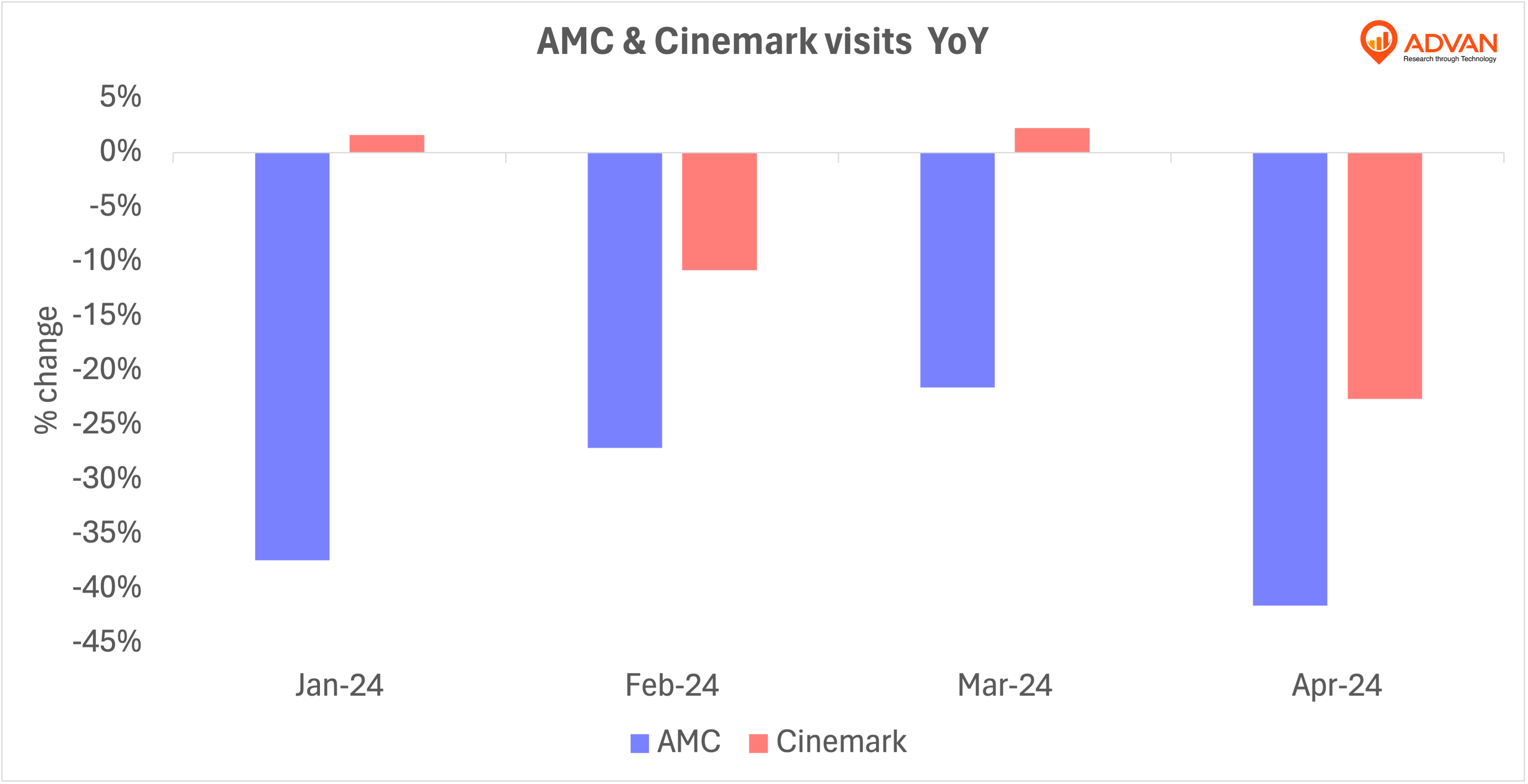The COVID-19 pandemic brought unprecedented changes across various industries, with the movie theater industry facing significant disruptions. After prolonged closures, new safety regulations, and the rapid rise of streaming platforms, theaters had to adapt to survive. Now, as we navigate 2024, let’s explore how movie theater attendance in the United States is faring in comparison to pre-pandemic levels and assess year-over-year trends.
Despite the gradual return of audiences, the numbers show that attendance is still below pre-pandemic levels. In January 2024, attendance was down by 33% compared to 2019. While February (-17%) and March (-14%) saw improvements, April 2024 recorded a significant decrease of 38% compared to 2019.

However, year over year growth industry-wise remains positive, with a consistent increase of about 1% across all four months in 2024. Although slight, this growth indicates a positive trend in the industry’s gradual recovery.
When examining the two largest movie theater chains in the industry, Cinemark and AMC, a stark contrast emerges in their post-pandemic recovery trajectories. Cinemark consistently outperformed AMC across all four months, demonstrating remarkable resilience amid lingering pandemic challenges. The chain posted year over year growth in both January (2%) and March (2%), underscoring its effective strategies in customer engagement and regional market penetration. Despite a slight dip in February (-11%) and a notable decline in April (-23%), Cinemark was able to attract and retain a good portion of its audiences.

In stark contrast, AMC struggled significantly, experiencing year over year attendance drops ranging from 22% to 42% across the first four months of 2024. January marked a particularly steep decline of 37%, while the subsequent months showed continued difficulties: February (-27%), March (-22%), and April (-42%).
While the movie theater industry is beginning to show positive YoY growth, it remains significantly behind pre-pandemic attendance levels with lingering consumer hesitance and shifting viewing habits continuing to impact theater attendance.

 LOGIN
LOGIN